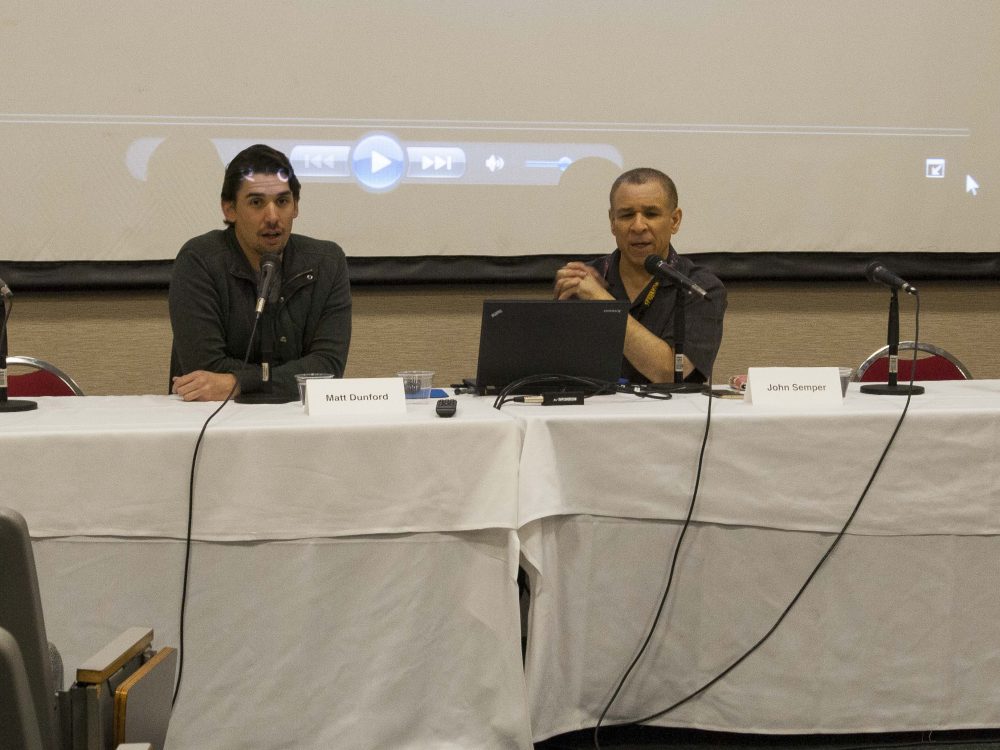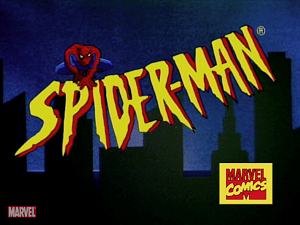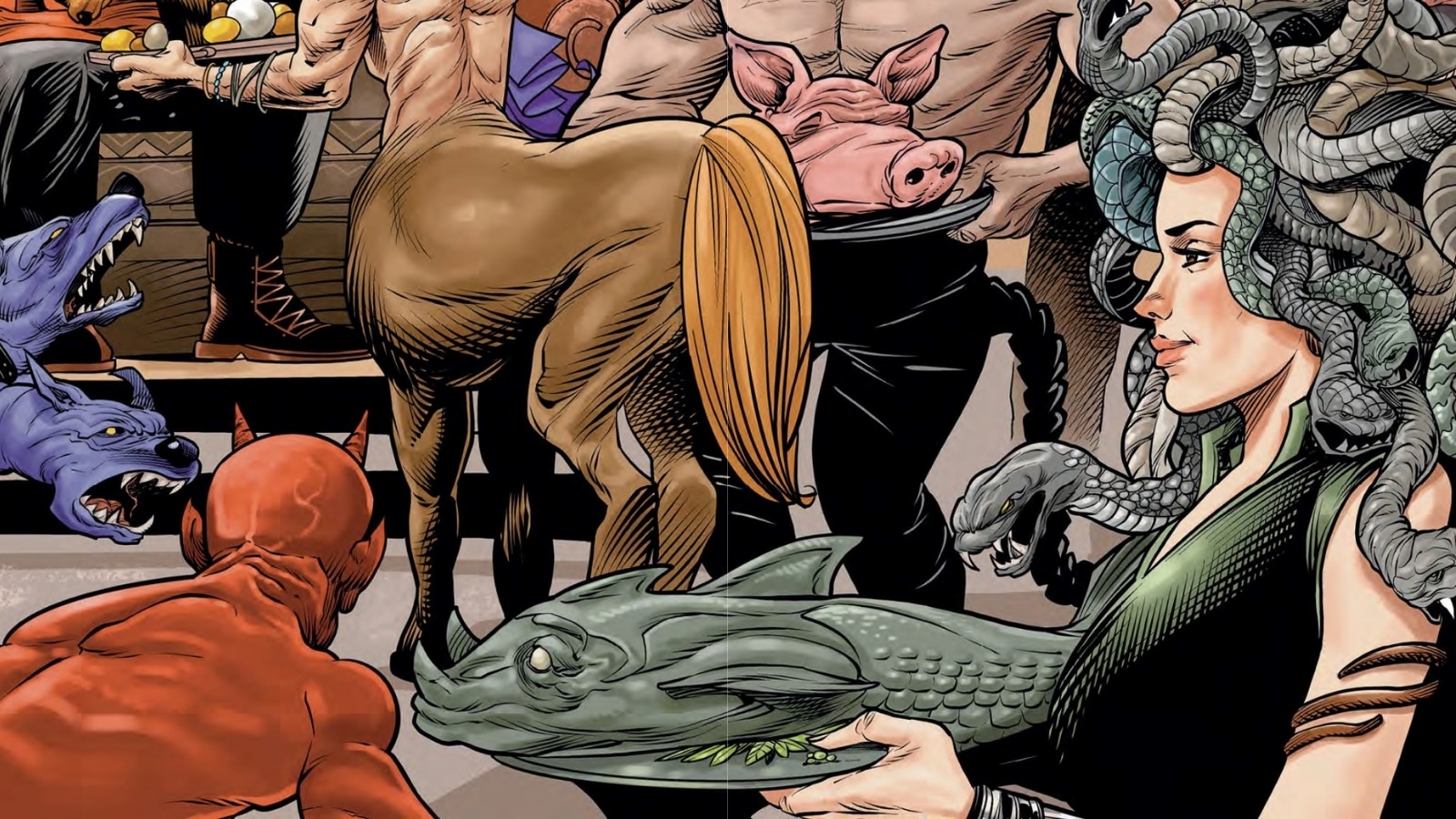
John Semper, Jr. holds an ever growing list of credits, ranging from his work as a screenwriter, producer, and story editor. His body of work is mostly invested the in the field of animation, where he is most remembered among cartoon and comic fans alike for his work on the much watched 90’s carton Spider-Man: The Animated Series. His work on this series helped not only the movement of many a plastic toy from store shelves to homes, but perhaps also contribute to the revival of the Marvel brand.
At this year’s San Diego Comic Fest, moderator and Comic Fest Chairman Matt Dunford introduced Mr. Semper. Dunford’s moderation is not without cause, for the Chairman confesses that it was the animated “webslinger” that further helped to pull him into the orbit of the comic book industry.
“That show absolutely blew my mind,” said Dunford. I had been reading Spider-Man comics as an avid fan. I had learned to read from them. As soon as I saw that show, I just entered ‘freak-out mode’. I begged my mom and dad to take me down to Toys-R-Us where I picked up my first Spider-Man action figures.”
Semper for his part began by “clearing” some myths regarding his work. As moderator Dunford began to speak about an opening sequence in the first episode of the show where Spiderman is seen high on the side of a building casually talking to a gargoyle statue named “Bruce” and alluding to the possibility that it was named after “Bruce Wayne” (aka Batman), Semper jumped in; “Bruce the gargoyle… well let me go back. In the industry, people are frequently trying to take your credit… They’ll give you all the money you want, but they’ll argue about the credits. So having people attempt to take my credit off of things, I got into the habit of putting all my friends’ names into everything I did… My friend was a film editor named Bruce Heckler. We had started our carriers together. And Bruce the gargoyle is named after Bruce Heckler.”

The other myth that Semper cleared up was the one regarding what FOX allowed the animated series to get away with. In trade shows and conventions years ago, Semper use to read some of the notes that “Standards and Practices” would leave for the writers and editors, as a laugh he said. Those that don’t know what Standards and Practices is, they are a department that makes sure the network (being the client) will not get into trouble by the F.C.C. by anything that the show may depict. “I think what happened was, so many people out there did not know that we had any censorship at all, and here I was, the first person revealing this. Point-in-fact, every cartoon show on the planet… we were all under the same umbrella in terms of what we could and could not do… This kind of became a part of this ‘Spider-Man’ lore, that we had lots and lots of censorship. Which we never did. We never had more than anyone else.”
As to why we never saw Spider-Man hit a “bad guy” in the face, Semper continued. “It’s twofold; First was I personally didn’t believe in modeling behavior for children that involved people ‘whacking’ each other in the face. That’s just my own personal thing… And then the second thing is with Spider-Man we have webbing, which was much more interesting. So instead of a guy running around and socking people in the face… I just had him do interesting things with his webs.”
Semper got his start as a writer, as he put it, “from the bottom up.”
“My first real job in the industry was as an apprentice fill editor. I was working on a movie called D.C. Cab… and I was freelance writing for Hanna-Barbera. And we sold so many scripts primarily to ABC and Scooby-Doo… that [ABC] said ‘Well who is this John Semper guy?’… They made me an offer to come over as a staff writer… So then I went over to Hanna-Barbera… Then got taken over to Marvel Productions… There was a guy in the back-corner office who I would go back to and hang out with him, and his name was Stan Lee. Stan was very frustrated at that time because we weren’t doing any Marvel stuff. We were doing a lot of Hasbro. Nothing but Hasbro, and a lot of other silly stuff.”
Unfortunately for Semper, Marvel Productions eventually closed, leaving him and his writing partner in a limbo of sorts. His partner eventually left the industry and Semper found other work. It was when FOX was having a lot of trouble getting their animated show, Spider-Man, on the air that Semper was given the position of producer and head writer.
“At that time, Avi [Arad] owned the rights to the Marvel characters.” As Semper pointed out, this was a spot in the Marvel company’s history where they were financially in trouble. Avi Arad, one of the owners of the then company Toy Biz, purchased the rights to the Marvel characters in an attempt to bank on their deep pre-existing character lines. However, this wouldn’t do well if the kids didn’t know who these characters were. “So Avi just bought the rights to the characters, but what he needed was to get a lot of TV shows on the air so that he could sell the toys to kids… And Spider-Man was one of those characters.”

Ultimately the plan worked, but in more ways than one. A young audience got their toys, but they also became familiar with Marvel’s webslinger. New possibilities then opened for the comics, where Marvel was able to take the episodes later on and translate them back into the comic form where Spider-Man came from. “A lot of what we did on the show eventually turned around and went into the comics,” said Semper.
Presently, the writer is currently involved in the DC comic Cyborg. Much like Marvel’s predicament with the Spider-Man cartoon, Semper was asked to head the comic as DC felt that the “part human, part machine” character needed to be built up before being introduced in the Justice League movie. Semper had been busy at work with his successfully crowed-funded project, War of the Rocketmen, when he had gotten the comic gig. What Semper thought would be a one issue a month comic turned out to be a two issue per month comic. After six months of working tirelessly, the writer expressed his relief to the crowd present that the comic would soon be tuning it back to a one a month deal, freeing up time to get back to his work on War of the Rocketmen.
Thanks to San Diego Comic Fest for spotlighting John Semper, Jr., and thank you Mr. Semper for taking the time to speak to a crowd of some avid comic and Spider-Man fans! Please visit Mr. Semper’s website, at www.johnsemper.com







